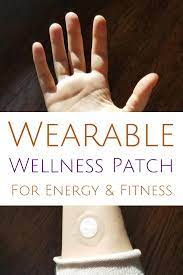
Stem cell therapies have emerged as promising medical interventions, offering potential benefits in regenerative medicine. However, one surprising revelation is that Stem Cell Phototherapy, a cutting-edge approach, is turning heads for its effectiveness and being notably more budget-friendly than traditional injected stem cell treatments. Here, we delve into the reasons behind the cost disparity and why Stem Cell Phototherapy is gaining traction as a cost-effective alternative.
Targeted Precision of Phototherapy:
Stem Cell Phototherapy involves using light to activate stem cells in a precise and targeted manner. This approach eliminates the need for large quantities of injected stem cells, as the therapy can stimulate the body’s natural regenerative processes without overwhelming it with excess cells. This precision reduces the overall cost of the procedure.
Lower Stem Cell Quantity Requirement:
Traditional stem cell injections often require significant amounts of stem cells to achieve therapeutic effects. In contrast, Stem Cell Phototherapy harnesses the power of light to stimulate the body’s existing stem cell populations. This reduces the need for extensive cell culturing and extraction, considerably reducing overall costs.
Reduced Manufacturing and Handling Costs:
Isolating and preparing stem cells for injection can be labor-intensive and costly. Stem Cell Phototherapy minimizes the need for extensive laboratory work, cell culture expansion, and intricate preparation processes. As a result, the associated manufacturing and handling costs are significantly lower, making the therapy more affordable for patients.
Decreased Risk of Complications:
Stem Cell Phototherapy minimizes the risk of complications associated with invasive procedures like injections. The non-invasive nature of light-based therapy reduces the likelihood of infections, adverse reactions, and other complications that may contribute to increased medical expenses. This safety profile further adds to the cost-effectiveness of Stem Cell Phototherapy.
Shorter Treatment Duration and Recovery Time:
Traditional injected stem cell therapies may involve multiple sessions and extended recovery periods. In contrast, Stem Cell Phototherapy often requires shorter treatment durations with minimal downtime. The reduced treatment and recovery times contribute to lower overall patient healthcare costs.
Growing Accessibility and Competition:
As stem cell phototherapy gains popularity, the increasing demand will foster competition among healthcare providers and facilities. This technology is patented and made available by only one company worldwide (LifeWave). The LifeWave company (at present) has no competition. Growing recognition and accessibility, in turn, enhances its attractiveness as a cost-effective alternative.
Insurance Coverage and Reimbursement Trends:
With the growing recognition of the therapeutic potential of stem cell therapies, including phototherapy, insurance coverage, and reimbursement trends are evolving. Some insurance providers may be more inclined to cover or partially cover the costs of Stem Cell Phototherapy due to its cost-effectiveness and potential long-term benefits, further reducing the financial burden on patients.
Stem Cell Phototherapy is making waves for its impressive regenerative capabilities and surprising affordability compared to traditional injected stem cell treatments. The targeted precision, lower stem cell quantity requirement, reduced manufacturing costs, decreased risk of complications, shorter treatment duration, growing accessibility, and evolving insurance coverage trends collectively position Stem Cell Phototherapy as a cost-effective and accessible option for those seeking regenerative solutions. As the field continues to advance, it’s evident that the future of stem cell therapies lies not just in their efficacy but also in their affordability and widespread accessibility.
Discover the convenience of having stem cell phototherapy delivered to your doorstep! Contact us immediately for seamless home delivery and unlock the potential of regenerative healing.
